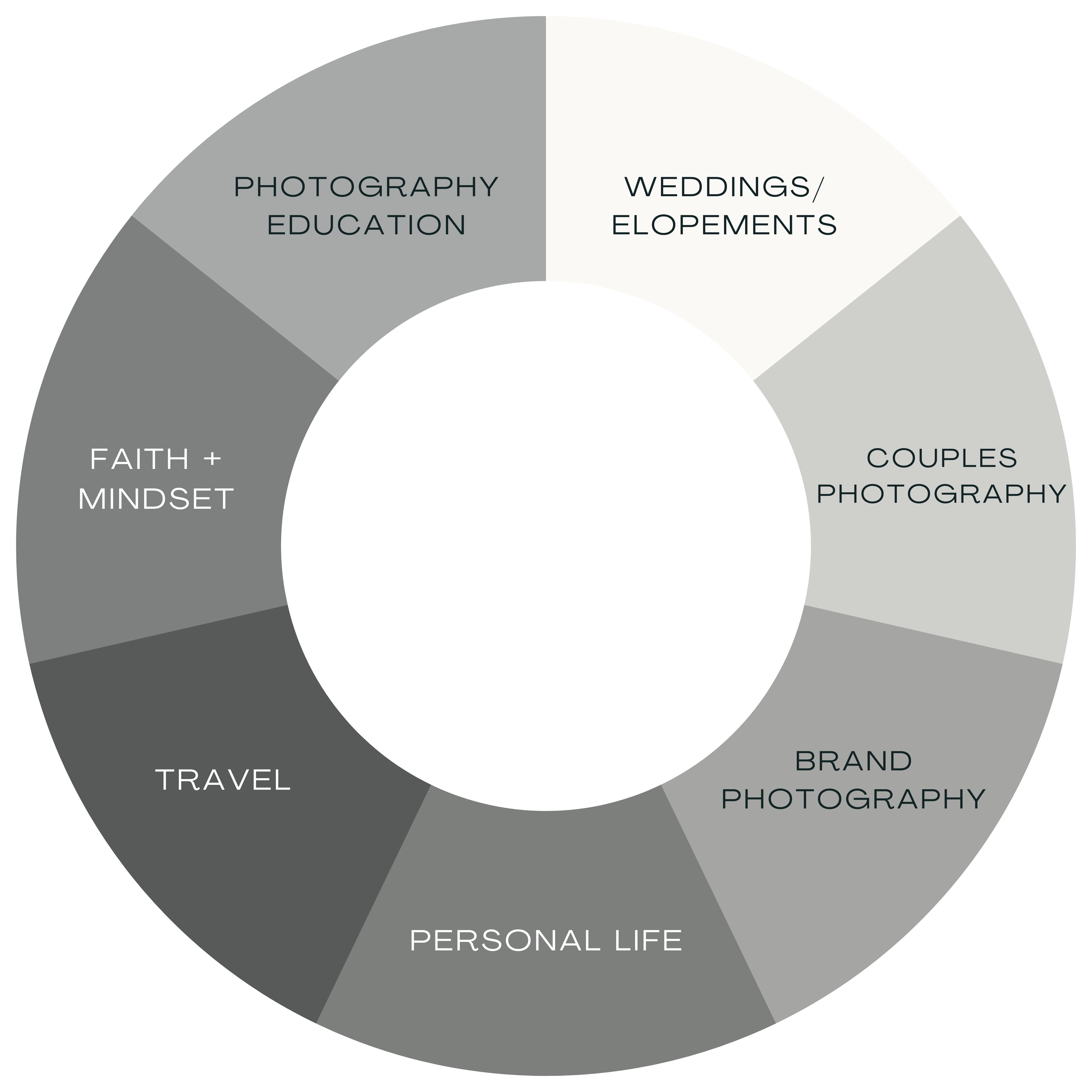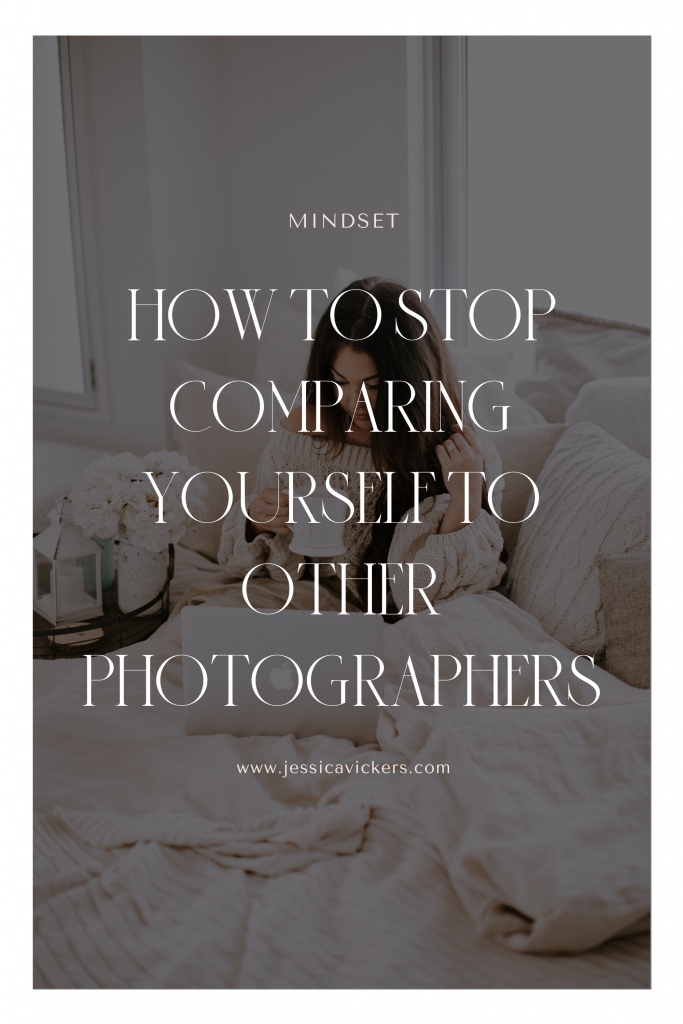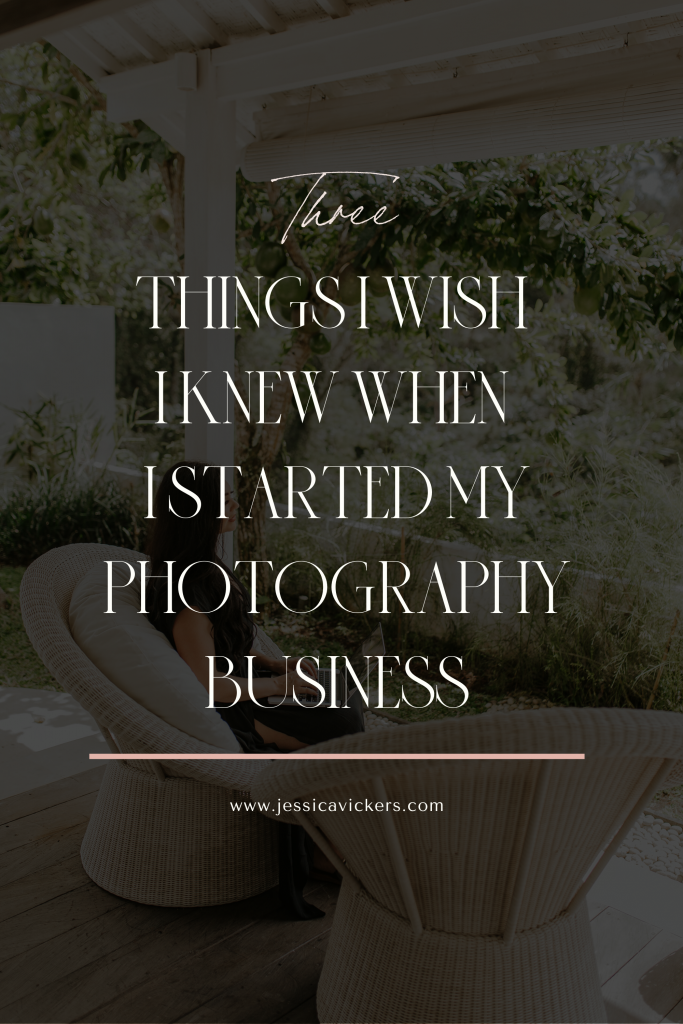There’s a LOT of photography education out there, taught by photographers — for other photographers on the internet. It’s everywhere. But the sad thing is, not all of it’s great. So that’s why in today’s blog I’m focusing on “what to do before you start offering education for photographers.”
Almost every single time I chat with photographers on their discovery call, I hear something along the lines of…
“I recently did a mentorship with another photographer. We met up at a coffee shop, and all they did was let me ask questions, and there wasn’t really a flow to the whole session. But the thing is, it’s not like I knew all the right questions to ask… so I just felt like it was an expensive coffee chat. Ultimately, that’s why I’m here — because I see you have an actual program.”
The truth is, this happens all. the. time. And it breaks my heart, because it’s unfair to the mentee.

The truth is, those photographers searching for a mentor were right. They don’t know the right questions to ask. And we, as educators, can’t expect them to.
I’m a firm believer in offering only the highest quality of a product or service to my clients.
In Colossians 3:23, it says, “Put your heart and soul into every activity you do, as though you are doing it for the Lord himself and not merely for others.” I take that seriously, and I’ll always encourage you guys to do so as well.
It’s also extremely important to note that by deciding to offer education for photographers, you’re opening up an ENTIRELY separate business model.
This new business model will require you to start from the ground up. You’ll have an entirely different target market (i.e. people to market to,) entirely different content, workflows and systems, sales pages, revenue goals, etc. The whole shabang.
Now, if the thought of that alone already stresses you out, now might be a good time to jump ship on the thought of offering education. Because truth be told, it’s a LOT OF FREAKING WORK.
If you’re still here, sweet. You can absolutely do this! (I know you can, because I did… and I’m not that special.) 🙂
By doing each of the things I’ve listed below before you start offering education for photographers, it’ll ensure that:
- you actually get proven results for your new education clients
- you don’t battle imposter syndrome
So, without further ado — let’s get into it. Here’s what to do before you start offering education for photographers!
1. Make sure you actually know enough about the topics you want to teach on, have tested them within your own business, and have gotten positive results.
I know this seems like it goes without saying, but I see a lot of photographers just regurgitating things other educators are teaching. Yet, when the rubber meets the road, they haven’t tested those things within their own business.
HERE’S THE THING: JUST BECAUSE OTHER PHOTOGRAPHY EDUCATORS ARE TEACHING ABOUT INSTAGRAM, OR SYSTEMS & WORKFLOWS — DOESN’T MEAN YOU SHOULD.
Yes, it may be a trending topic when it comes to education, but it wouldn’t be ethical for you to teach something you don’t know enough about. Therefore, stick to the things you DO know, and know work. (You’ll be way less likely to battle imposter syndrome this way!)
2. Perform in-depth customer research on the target market you’re intending to serve, before you start offering education for photographers.
If you’ve passed number one, amazing! I’m so glad to hear it. 🙂
Okay, so now we want to start thinking about exactly who we want to target with this photography education. (And I don’t just mean other photographers. I also don’t mean where they shop, or what their favorite magazine is.
Here’s a good list of questions to get you started, (but please know there’s many more than can/need to be answered!)
- What is their demographic?
- What are their pain points/problems?
- What things do the photographers that you want to speak to value?
- What do they all have in common?
- What are their wants/needs/desires?
- What are their hesitations/anxieties?
- What are their motivational triggers?
- What makes them purchase?
Now, I know you most likely won’t have this information lying within your own audience to be able to pull from. So if you already know you’re involved in a few facebook groups where your ideal education clients would be hanging out, then start there! 🙂
3. Poll your newly discovered target market on what they actually want to learn.
The next most important step is to poll people on what THEY are looking to learn.
Notice I didn’t say “on what you’re thinking about offering,” or “on what you want to teach.”
This is SO important, because this will keep you from creating content that nobody reads or benefits from, (or even worse — services that no one purchases!)
4. Compile that research into a Google doc, and input it into a folder in your project management system.
Now that you’ve received a plethora of information about what to teach on, categorize it by the following:
- a) the topics you’re qualified to teach on, (i.e. things that you’ve gotten others proven results)
- b) the topics you’re not yet qualified to teach on, but want to research, then implement, then test, and then master
Then, once you’ve done that, categorize them even further by grouping “like” topics together.
For example, “instagram, facebook groups, reels, and caption-writing,” could all fall under the category of “social media.”
5. Begin building up your FREE education database by sharing one “hero content” piece per week. (Yes, before you start offering education for photographers!)
When I first decided to finally dive deep into offering education for photographers, I made a commitment to share one, high-value piece of free content EVERY SINGLE WEEK for a year — before I ever sold my audience anything.
For some, this is a blog post (which is what I do,) for some it’s a youtube video, and for others it’s a podcast. Whatever it is, commit to sharing one large piece of helpful content on a weekly basis.
Doing this allowed me to see “how much I really knew,” but also allowed me to begin building an audience that was solely relying on the education side of my business, not photography.
Once you begin doing this, education will become another “content pillar” for you.
Content pillars, (which you probably already know about if you’re wanting to step into photography education,) are topics of content you cycle through, (typically on a weekly basis.)
Here’s what mine currently look like:

Sharing a large piece of hero content weekly was the very thing that began to position me as an educator and authority figure in the photography industry. Looking back, it was honestly the greatest thing I did to build up the education side of my business.
By doing this, I received so much feedback from readers about how helpful my content was, etc., and also received additional questions that helped me fine-tune the content.
There’s a level of confidence that comes to you and encourages you when you constantly receive DM’s and email’s about how helpful your most recent blog was, etc. It’s really empowering! 🙂
6. Develop an outline for your unique framework based on the responses you received from your polling + research.
After you’ve consistently pumped out free content to position yourself as an authority figure and go-to in your industry, begin to develop an outline for your “signature framework.”
A signature framework is simply the unique method in which you’ll teach your clients how to get from “A to Z.”
The single-handedly best way to do this is to “reverse engineer” the desired result for your customer.
If you’re promising your ideal client that they’ll be able to grow a wildly successful photography business, you’ve got to make sure you have a curriculum developed that will actually do that for them.
(Granted of course that’s dependent upon whether or not they actually do the work, but you get the point!)
So, begin to braindump all of the topics you can teach on (from your original google doc) that will get them the desired result you’re promising, Then, categorize them in the way that makes the most sense to teach them in.
7. Begin to write the curriculum for your signature framework.
After you’ve developed your outline, you’ll now begin to write the curriculum for each topic.
Please know this isn’t a “quick” step, and takes immense time and attention to detail if you want to do it well. So please don’t get discouraged if you feel like it’s taking you a while. It took me almost an entire year to write my curriculum!
Pro tip: one of the most important parts when it comes to developing a curriculum, is to be sure to identify your key learning objectives.
I like this explanation from Your Dictionary, it says “the key to writing learning objectives is to make them SMART: Specific, Measurable, Attainable, Relevant, and Timely. Your assessment will tell you whether your objective was specific and measurable enough, while the lesson context dictates the objective’s attainability, relevance, and timeliness.”
Here’s another great resource for understanding the basics of deciding on key learning objectives.
8. Beta test your newly developed system, for FREE.
Now that you’ve developed your own signature curriculum, uhm — PARTY!!! (Seriously, it’s a HUGE feat.)
But, the first thing you’ll want to do is beta test it.
I know, I know. You’re thinking “but gah I’ve spent SO much time on this, I’m just ready to sell it already!!”
Slow down sis.
We’ve got to make sure it actually works. I don’t know about you, but I couldn’t sleep at night knowing I was selling something that didn’t actually work or get my clients solid results.
The best way to do this is to beta test it. This means you’re testing it to ensure it actually gets your ideal clients the results you promised.
Beta-testing your program will give you two very valuable things:
- Your ideal client their desired results, *YAY*, and
- Raving testimonials (if you’ve done it right!)
Pro tip: the raving testimonials from your beta-testers should then be strategically placed on your new signature framework’s sales page. ?
After you’re absolutely positive your framework has gotten proven results for your group of beta-testers, then you’ll move onto the next step: creating all the systems for officially offering it to the public!
9. Develop the back-end business systems necessary to begin offering your signature framework to the public.
You’re going to need three different workflows set up in your CRM/project management system:
- A lead generation workflow – (an automated system to continually bring highly-qualified leads to your service on auto-pilot)
- A project management workflow – (where you’re actually executing the service, sending deliverables, etc.)
- An offboarding workflow – (a way to say goodbye to your clients that leaves them with raving reviews, but also wanting more whenever you decide to offer it! #lifetimecustomervalue)
10. Set up your sales funnel for your new framework.
The most important things you’ll need established to start selling your signature framework are:
- A high-converting sales page (and by high converting, I mean written with extremely strategic copy)
- This is a page on your website that sells JUST your signature framework. It doesn’t point to any other offers or call the reader to take action on anything else, other than booking you for that framework.
- Here’s an example of my 1:1 coaching sales page you can dissect and view as an example! (But be cool and please don’t copy, you know copyright laws.) 😉
- A payment processing service
- You’ll need a way to send them a proposal (which includes the scope of the project, a payment plan, and a contract all in one.) I use Honeybook for this!
- A seamless experience that both gathers and delivers information in the correct flow of steps
- You’ll need a seamless workflow to take them from inquiry to offboarding. I use Honeybook for this as well, and have a system set up specifically for my mentoring clients; with workflows, sales call scripts, templates, and client welcome magazines, etc. These are all COMPLETELY different from what I’m sharing with potential clients that inquire about my photography services.
I wish I would’ve known these things SO badly before I started offering education. It would’ve saved me a lot of time and headaches. But hopefully this list of things to do before you start offering education for photographers was helpful for you! 🙂
Still excited at the thought of offering education, but realizing it’s a LOT more work than you originally thought it was? Welcome to the club sis! ? But no worries, I’m here to help!
Click below to book a free discovery call with me, where I can help you come up with a plan to begin offering education in your photography business!
LOOKING FOR MORE HELPFUL PHOTOGRAPHY TIPS? FEEL FREE TO BINGE ON THESE BLOG POSTS, OR PIN ’EM ON PINTEREST FOR LATER! 
If you’re short on time, follow me on Pinterest – and you’ll get these kinda tips delivered straight to your feed! You know… when you’re scrollin’ through Pinterest with coffee in hand, ready to take on the day… or, procrastinate.
Whatevs. Pinterest biz sesh, anybody!?







Read the Comments +